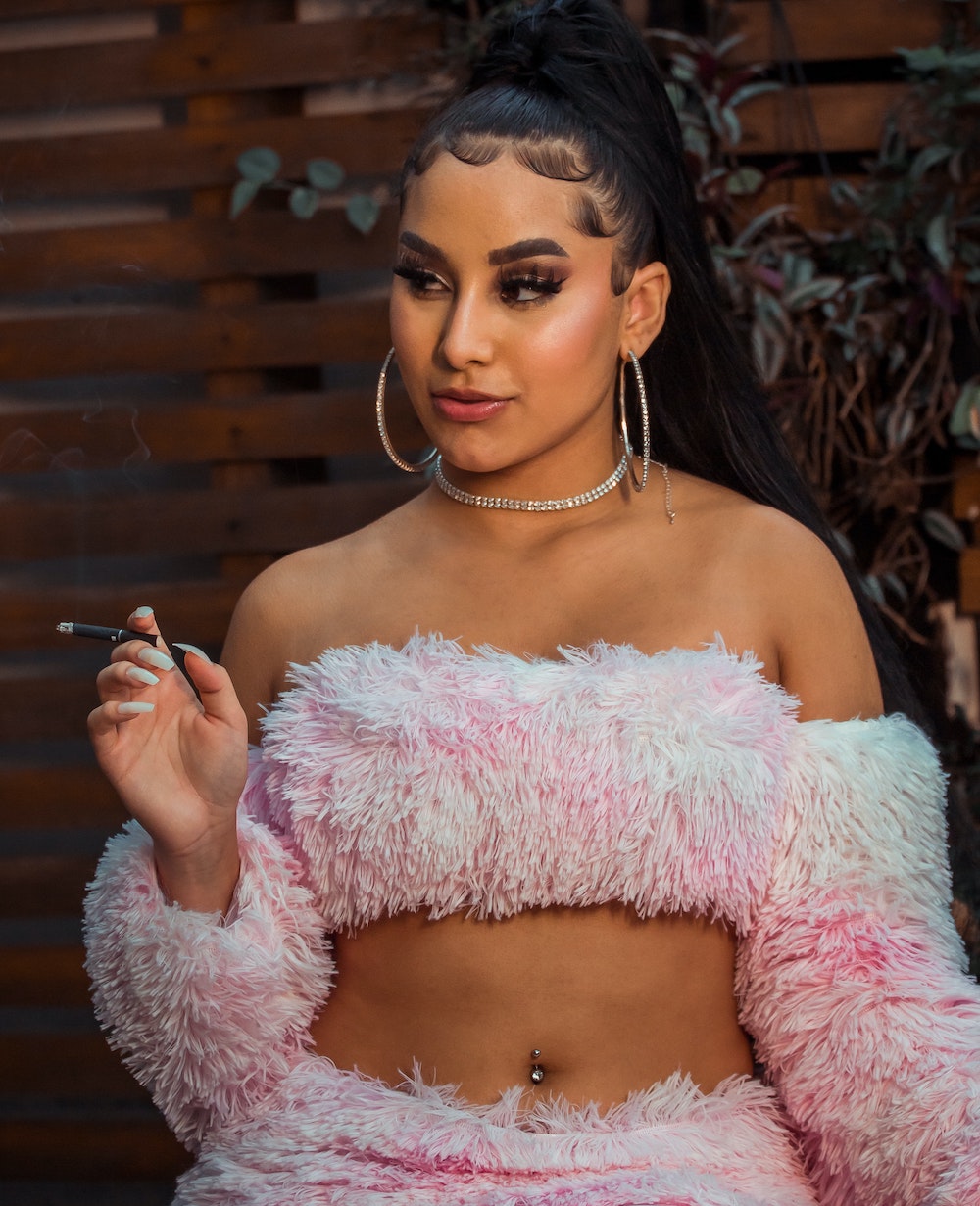Navel Piercing Aftercare: Everything You Need to Know for Healthy Healing September 13, 2021 – Posted in: Piercing Advice – Tags: navel piercing aftercare, navel piercing facts, navel piercing healing time, navel piercings
Highlights:
- Navel piercings take a minimum of 6 – 9 months to fully heal.
- Besides cleaning the piercing daily, you will need to protect it from snags and debris.
- Not everyone’s anatomy is suitable for this piercing. Be sure to consult a reputable piercer before getting one.
When the summer heat hits, there’s nothing cuter than a gemstone peeking out of your belly button. As you’re bulking up your summer wardrobe, you might also think about adding a navel piercing to your summer look.
While the navel piercing is a fantastic addition to any style, it also has a substantial healing time which could put a wrench in your summer plans. Before you get a navel piercing, here’s what you need to know about the aftercare process.
Navel Piercing Fast Facts
- Healing: 6 – 9 months
- Pain level: Medium
- Jewelry: Curved barbell, hoops, navel jewelry
How long does a navel piercing take to heal?
Due to its placement, the navel piercing takes a minimum of 6 – 9 months to heal. (As always, this is only a minimum time, and you should have a piercer take a look to confirm that it has fully healed before stopping aftercare practices.)
The long healing time is largely due to the fact that the abdomen sees a lot of movement. Even if you do your best to remain still, you’ll probably twist and turn a bit. This will move the jewelry within the piercing. Its location also makes it a major snag risk. Besides being painful, snagged jewelry can damage the healing piercing which could prolong healing times or worse.
To ensure the shortest healing time possible, make sure that you maintain good aftercare practices, and carefully choose the clothing that you wear throughout the healing period to protect it from snagging.

Photo by Blue Bird
Navel piercing aftercare practices
The navel piercing aftercare process is simple enough: spray the piercing 2 – 3 times daily with a piercing aftercare saline solution, like NeilMed Piercing Aftercare, and make sure that you practice good hygiene and take care of yourself.
Because the navel piercing is located in the abdomen, there are certain things that you need to avoid throughout the healing process to ensure that your piercing heals safely.
Aftercare tips
- Try not to put pressure on the jewelry. This means that you should stay away from tight clothing, and try not to slouch when you sit to avoid squishing the jewelry between the tummy rolls that the majority of us tend to have.
- Avoid sandy beaches as well as pools, lakes, and baths. This means that you should probably wait to get your navel pierced in the fall when you have plenty of time to let your piercing heal before beach season hits.
- If you engage in activities that cause your piercing to hurt, you may set yourself up for a piercing that wants to migrate or reject. Be careful with any activities that severely irritate your fresh piercing, like certain yoga poses.
- If you plan on getting pregnant, then you should wait to get your navel pierced. Similarly, if you anticipate going through an extreme body weight change, a new piercing might be better saved for later.
Overall, navel piercing aftercare is no different than any other piercing. However, it is unique because of the significant healing period and its vulnerable position. As long as you keep your piercing clean, take care of yourself, and remain mindful throughout the healing process, then you shouldn’t encounter any issues.
Can everyone get their belly button pierced?
The truth is that your anatomy will determine whether or not you can get a navel piercing.
If your belly button frequently folds inward, particularly when you slouch or sit, your piercer might advise against the navel piercing only because the healing process might be more difficult for you. Too much pressure will likely be placed on the jewelry, increasing the risk of rejection. This can happen in any body type, so you shouldn’t take offense if your piercer suggests another piercing. They want your piercing to be successful, and not all bodies can accommodate every piercing, regardless of location.
If you have an outie belly button, you might not be able to get the navel piercing. Have a piercer take a look to determine whether a navel piercing is suitable for you.
Keep in mind that the piercing might have to be done at an angle, according to your anatomy. Your piercer will let you know the safest way to get your belly button pierced. If it’s not exactly in the location that you pictured, remember that your piercer wants your piercing to look good and be healthy. Their placement will be determined by the shape of your belly button.

Photo by Hiago Italo
What about pregnancy?
If you’re pregnant or trying to get pregnant, you shouldn’t get a belly piercing simply because it takes a long time to heal, and your growing belly will impede the healing process. However, a healed belly piercing usually does just fine during pregnancy, and many pregnant women enjoy their belly piercing for the entire pregnancy.
If you’ve had surgery in the belly button area, you may or may not be able to have your navel pierced, depending on the scar tissue in the area and the type of surgery that you’ve had. Have your piercer take a look to let you know whether a navel piercing is possible for you.
The belly button piercing is an adorable addition to your summer look, but it does take a considerable amount of time to heal. Make sure that you’re willing to commit to aftercare practices before you get your navel pierced. If you’re able to take care of it for the entire healing period, and you have suitable anatomy, then you shouldn’t see any issues.







